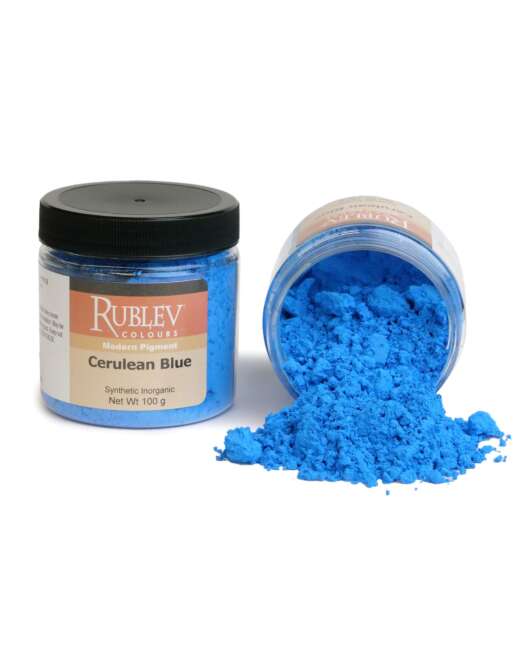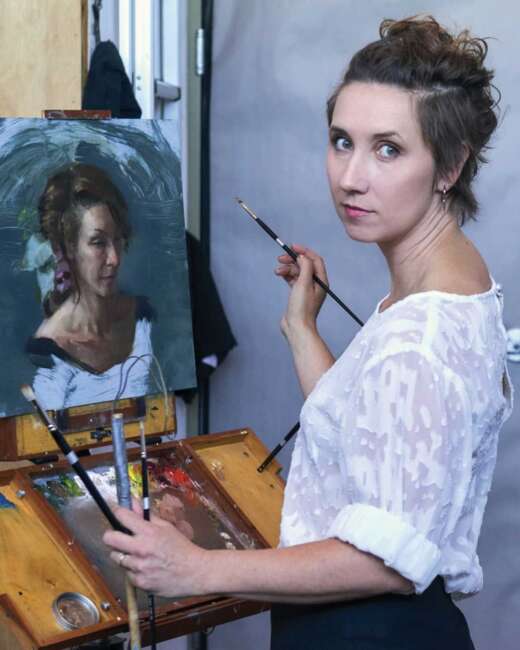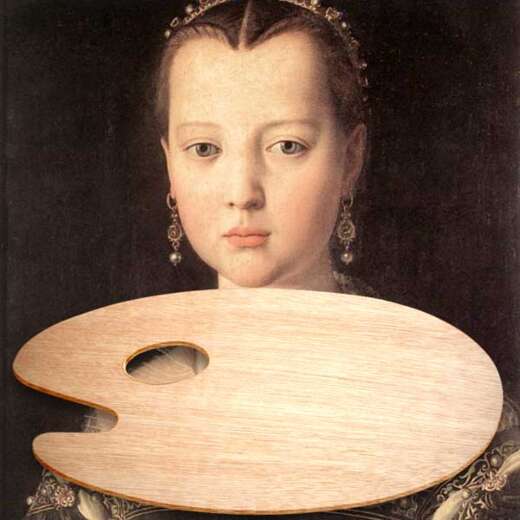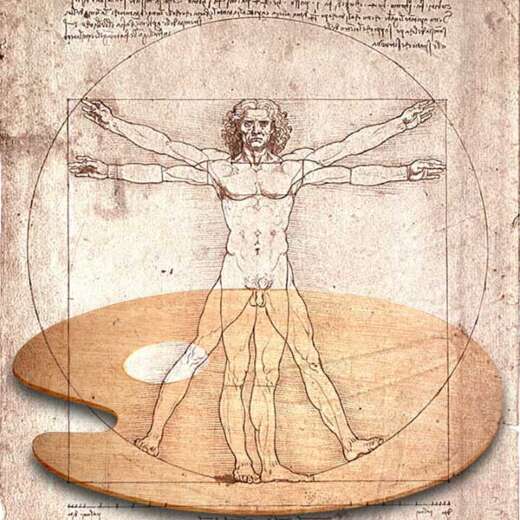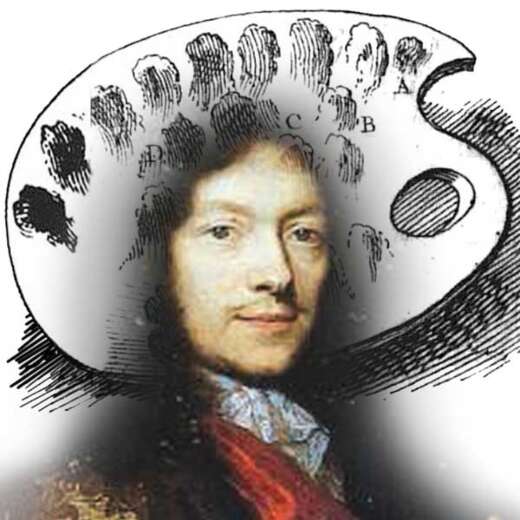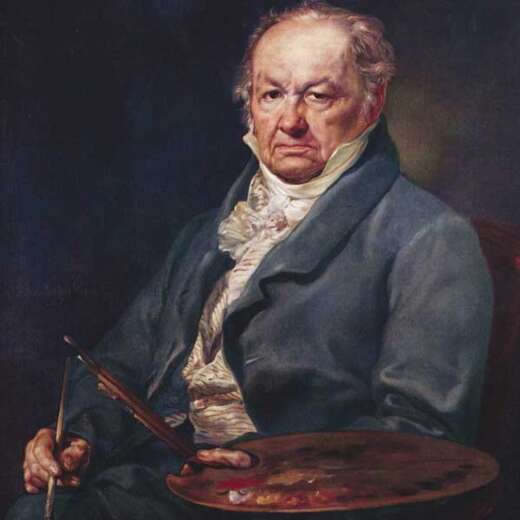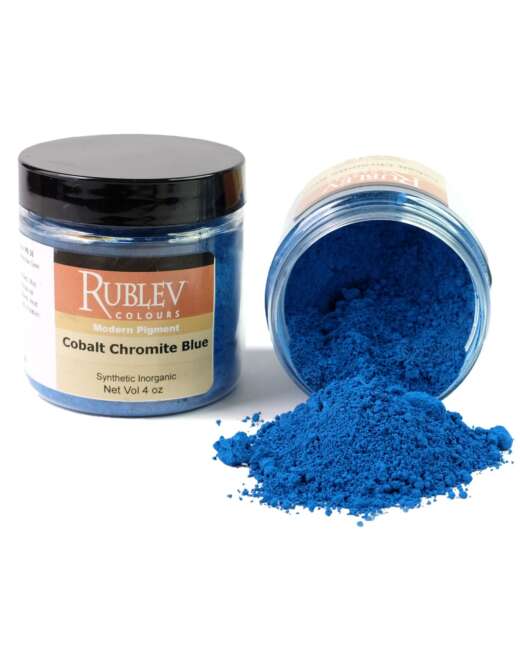Basic color theory for oil painting involves understanding the color wheel, comprising primary (red, yellow, blue), secondary, and tertiary colors. It also includes concepts like hue, saturation, value, warm and cool colors, and complementary colors.
Mastering Color in Oil Painting: Le Blon's Revolutionary Techniques

: Jacob Christopher Le Blon (1667–1741) was an engraver who developed what is perhaps the first system of color printing using three primary colors: red, yellow, and blue. In his treatise, Coloritto, Or the Harmony of Colouring in Painting, he propounds a painting theory that interests students and professionals alike.
DIscovery of Color Theory and Printing
Le Blon's discovery and subsequent innovations in the realm of color printing and theory significantly impacted not only the technical processes of art production but also the conceptual understanding of color in the 18th century, fostering a deeper appreciation for the complexities of color perception and reproduction. Le Blon's pioneering work in color separation and the development of the three-color and four-color printing processes marked a monumental leap forward in the ability to accurately reproduce the range of colors found in paintings and natural scenes. This development was not just a technical achievement; it was a conceptual revolution that bridged the gap between art and science, intertwining the aesthetic principles of color theory with the practicalities of printing technology.
At the heart of Le Blon's significance was his application of Newton's color theory to the printing process. Isaac Newton's experiments with prisms and light demonstrated that white light could be split into a spectrum of colors, a principle that Le Blon ingeniously applied to the realm of color printing. By recognizing that a wide range of colors could be created by combining three primary colors—red, yellow, and blue—Le Blon laid the foundation for modern color printing. His addition of a fourth plate, usually black, to enhance shadows and depth further refined the process, enabling a more nuanced and detailed reproduction of artworks.
Le Blon's discovery was transformative for several reasons:
Enhanced Reproduction of Artworks: Before Le Blon's process, reproducing the full spectrum of colors in paintings through printing was a cumbersome and imprecise task. His technique allowed for a more faithful reproduction of the artist's original vision, thus democratizing access to art by enabling more accurate prints that could be distributed widely.
Interdisciplinary Influence: Le Blon's work exemplified the fruitful intersection between artistic techniques and scientific principles. By applying Newton's discoveries to the arts, he underscored the importance of interdisciplinary approaches in advancing technology and understanding. This paved the way for further innovations at the intersection of art, science, and technology.
Impact on Color Theory: Beyond the technical domain, Le Blon's approach influenced the conceptual understanding of color in art. His practical demonstration of color mixing and separation helped solidify the concept of primary colors and their combinations, which became a cornerstone of color theory. This had a profound impact on artists' practices and their exploration of color in painting, influencing how colors were understood, used, and perceived in art for centuries to come.
Commercial and Educational Implications: Le Blon's printing processes had significant commercial implications, changing the landscape of printmaking and publishing. It also had educational impacts, as more accurate reproductions of artworks and scientific illustrations became available, enhancing the transfer of knowledge across Europe.
In conclusion, Jacob Christoph Le Blon's discovery and its application were seminal in bridging the worlds of art and science, leading to a deeper understanding and appreciation of color theory and its practical applications. By enabling the accurate reproduction of colors, Le Blon not only transformed the printing industry but also had a lasting impact on the artistic practices, color theories, and visual culture of the 18th century and beyond. His work stands as a testament to the power of interdisciplinary innovation, embodying the synthesis of technical skill and aesthetic insight that continues to influence the realms of art and science today.
Le Blon's Color Theory and Its Impact on Painting
Le Blon's revolutionary work in color theory and printing technology significantly influenced the domain of oil painting in his time and for centuries to follow. Although Le Blon is primarily known for his contributions to color printing, the principles he explored and applied had profound implications for oil painting, impacting artists' approaches to color composition, blending, and the theoretical underpinnings of their work.

Separate prints of the four plates: indigo, yellow, carmine, and bistre from a color halftone engraving by Jacob Christoph Le Blon (1738) after a portrait of Cardinal André-Hercule de Fleury (1738) by Hyacinthe Rigaud.
Le Blon’s application of Isaac Newton’s principles of color to the printing process indirectly underscored the importance of color harmony and balance in visual arts, including oil painting. By demonstrating that a wide spectrum of colors could be reproduced through the combination of three primary colors—red, yellow, and blue—Le Blon provided a practical demonstration of color theory that artists could apply to their work. This understanding helped artists to achieve more dynamic and vibrant compositions in their paintings, emphasizing the emotional depth and realism that could be conveyed through nuanced color blending and contrast.
Influence on Artists and Art Movements
While there may not be direct evidence of Le Blon personally training or influencing specific painters of his time, the broader implications of his work permeated the artistic community, influencing various art movements and artists in the 18th century and beyond:
Rococo and Neoclassicism: In the 18th century, the Rococo movement, known for its elaborate ornamentation and use of light and pastel colors, could have found Le Blon’s theories on color blending and harmony particularly resonant. Similarly, Neoclassical artists, who sought clarity and simplicity, could apply these color principles to achieve their ideal of beauty and purity in composition. While individual artists like François Boucher or Jacques-Louis David might not have cited Le Blon directly, the principles that underpinned their approach to color and composition were part of the broader intellectual milieu influenced by Le Blon’s discoveries.
Impressionism and Post-Impressionism: Moving into the 19th century, the impact of color theory became even more pronounced with movements like Impressionism and Post-Impressionism. Artists such as Claude Monet and Vincent van Gogh, though separated from Le Blon by a century, were deeply engaged with exploring color's dynamic and emotive potential. Le Blon's emphasis on primary colors and the blending of hues to achieve a broader palette prefigured the Impressionists' and Post-Impressionists' experimental approaches to capturing light and momentary impressions through distinct color strokes.
The Impact on Art Education
Le Blon’s work also had a significant educational impact, influencing how color theory was taught to artists. His practical demonstrations and the theoretical basis of his printing technology became a foundational aspect of art education, informing artists about the relationships between colors and how they could be manipulated to achieve desired effects. This knowledge was integral to developing painting techniques and styles that relied on a sophisticated understanding of color interactions.
Le Blon's Influence on Oil Painting
Le Blon’s influence on oil painting is thus more conceptual and indirect, embedded in how color theory evolved and became central to artistic practice. His work laid the groundwork for a more nuanced understanding of color, which artists across generations have continued to explore and expand upon. Le Blon’s legacy in oil painting is not tied to specific artworks or direct mentorships but is rather seen in the ongoing exploration of color’s potential to convey depth, emotion, and realism in art. Through his pioneering efforts, Le Blon enriched the palette of the art world in ways that continue to resonate in the works of contemporary artists, underscoring the timeless relevance of his contributions to the understanding and use of color in art.
Le Blon's Color Theory: Harmony of Colour in Painting
Le Blon describes white as a compound of primitive impalpable colors and black as a similar compound of the palpable. True painting, he says, represents light by white, shade by black, reflections by yellow, and turnings-off or roundings of objects by blue. Such is the outline of Le Blon's brief and perspicuous theory, which, however deficient or defective, verges upon the truth and simplicity of nature.

Of Preliminaries.
Coloritto—or the Harmony of Colouring, is the Art of Mixing COLOURS, in order to represent naturally, in all Degrees of painted Light and Shade, the same FLESH, or the Colours of any other Object, that is represented in the true or pure Light.
Painting can represent all visible Objects, with three Colours, Yellow, Red, and Blue; sort all other Colours can be compos’d of these Three, which I call Primitive; for Example.
Yellow and Red make an Orange Colour.
Red and Blue make a Purple and Violet Colour.
Blue and Yellow make a Green Colour.
And a Mixture of these Three Original Colours makes a Black, and all other Colours whatsover; as I have demonstrated by my Invention of Printing Pictures and Figures with their natural Colours.
I am only speaking of Material Colours, or those used by Painters; for a Mixture of all the primitive impalpable Colours, that cannot be felt, will not produce Black, but the very Contrary, White; as the Great Sir Isaac NEWTON has demonstrated in his Opticks.
White, is a Concentrating, or an Excess of Lights.
Black, is a deep Hiding, or Privation of Lights.
But both are the Produce of all the Primitive Colours compounded or mixed together; the one by Impalpable Colours and the other by Material Colours.
True PAINTING represents
1. Light by White.
2. Shades by Black.
3. Reflexions by Yellow
4. Turnings by Blue.
N.B. [notabene; observe carefully or take special notice, Ed.] In Nature, the general Reflex Colour is Yellow; but all the accidental Reflexions, caused by an opposite Body or Object, partake of the Colour of the opposite Body that caused them.
When a Painter says, that such Artists make a good Coloritto, he means, that they represent truly and naturally the Nude or the naked human Flesh; supposing they can paint all other visible Objects well, and without Difficulty.
In order to learn to paint a good Nude, or any other color’d Object, we must first learn to represent a white Object. For Example, To paint or represent a Head of Plaster, &c.
In which the White will serve to represent the Lights; and the Black the Shades; But White and Black are not alone sufficient like Nature is self, a white Object, which indeed represents a Print or a Design, but not a white Object.
To represent such a white Object, we must add to the Shades, or join with them the Reflex, or the Colour of the Reflex, viz. the Yellow; and with the Turnings off, or Roundings, we must join the Colour of the Turnings, viz. the Blue.
Remember that in natural Objects, the Turnings off, or Roundings, are almost imperceptible.
To represent a colour’d Object, we may take an Head of Plaster stain’d with the Colour of Flesh, and set it in a good Light; and then we shall see that the same Colour of Flesh discovers it self throughout, or over all the Head, and distinctly enough, even in the Shades, in the Demishades or Mezzotints, in the Reflexions, in the Turnings off or Roundings, &c.

Figure V. Color Palette
So begins Le Blon’s theoretical discussion of color mixing in painting. In subsequent pages, he outlines a practical scheme for setting up the palette and individual color mixes for painting the various flesh tones in their shades and tints.
The basic palette of Le Blon consists of these pigments: 1. lead white, 2. vermilion, 3. red ocher, 4. brown ocher burnt, 5. lack (Indian or lac lake from lac dye), 6. umber, 7. burnt umber, and 8. black. Additional colors that may be used are: Brown pink (or stil de grain), asphaltum, yellow ocher, massicot (lead-tin yellow), and “blew” (azurite, lazurite or indigo). This palette is almost identical to that prescribed by Roger de Piles some 40 years earlier.

Figure VI. Portrait of a young woman
Le Blon presents nine figures, two reproduced above in Coloritto, consisting of about forty pages in all. These figures, numbered I to VIIII, show, first of all, the three intermediate color plates that show the progress to obtaining the final print in the color of the portrait of a young woman (unidentified). The five subsequent figures (V to VIIII) show the reproduction of the palette in apposition to two engraved portraits comprising, according to Le Blon, on the one hand, “vermilion for the main dye” and on the other hand, “red earth for the General dyeing.” Le Blon thus enumerates the degrees of light and shadow: “Mezzotints,” “Demishades,” “Reflexions,” “The Three Different Degrees of the Great Shadow,” “The key,” “The Shining,” “The two different shining,” “Turning off,” and “Roundings.”

Gautier’s Palette
Jacques Fabien Gautier, a pupil of Le Blon, used his color printing system to further his theories about color and bolster his invention claims. Le Blon had included a palette in Coloritto. Gautier argued that Le Blon’s three primitives produced an insufficient number to replicate all the colors found in paintings. He used the same palette form to advance his system in Mercure de France. His colors are:
A. Vine, ivory, or smoke black
B. Ultramarine or Prussian blue
C. Light ochre
D. Vermilion (or Cinnabar)
E. Lead white
Together, they will make another seven of the most important painters’ colors.
EC. Naples yellow
AC. Roman or dark ochre
BD. Venetian red or carmine
AD. Red-brown
ABC. Verona (green) earth
BCD. Cologne earth
ACD. Burnt ochre or English ochre
ABCD. Raw umber
Jacob Christoph Le Blon's discovery and its application were seminal in bridging the worlds of art and science, leading to a deeper understanding and appreciation of color theory and its practical applications. By enabling the accurate reproduction of colors, Le Blon not only transformed the printing industry but also had a lasting impact on the artistic practices, color theories, and visual culture of the 18th century and beyond. His work stands as a testament to the power of interdisciplinary innovation, embodying the synthesis of technical skill and aesthetic insight that continues to influence the realms of art and science today.
Where to Buy
Shop Now for
The colors described by Le Blon are the same as the palette described by Roger de Piles in his famous painting treatise, Les Élémens de Peinture Pratique (1684).
References
Le Blon, J.C. 1725. Coloritto, Or, The Harmony of Colouring in Painting: Reduced to Mechanical Practice, Under Easy Precepts and Infallible Rules, Together with Some Colour’d Figures, in Order to Render the Said Precepts and Rules Intelligible Not Only to Painters, But Even to All Lovers of Painting, Publisher not identified, Digital facsimile of the book from the Linda Hall Library: http://lhldigital.lindahall.org/cdm/ref/collection/color/id/23168
Jacob Christoph Le Blon, or Jakob Christoffel Le Blon, (2 May 1667–16 May 1741) was a painter and engraver from Frankfurt who invented the system of three- and four-color printing, using an RYBK color model similar to the modern CMYK system. He used the mezzotint method to engrave three or four metal plates (one each per printing ink) to make prints with a wide range of colors. His methods helped form the foundation for modern color printing.
“Systeme Practique des Couleurs du Sr. Gautier,” Mercure de France, no. 1008 (July 1749), after page 168.
Jacques Fabien Gautier d’Agoty (1716–1785) was a French anatomist, painter, and printmaker. D’Agoty was born in Marseille and became a pupil of the painter and engraver Jacob Christoph Le Blon, with whom he became a rival for the title of the invention of a method of a color-printing method based on etching and mezzotint engraving. He later exploited this process with his four sons: significantly, he published a journal that included color-printed images.
Frequently Asked Questions
What is the basic color theory for oil painting?
What are the three rules of oil painting?
The three foundational rules of oil painting are: 1) Fat over lean (apply thicker layers of paint over thinner ones), 2) Thick over thin (apply dense paint over more fluid layers), and 3) Slow-drying over fast-drying (to prevent cracking).
What is the color theory of painters?
Painters' color theory revolves around using the color wheel to create harmonious compositions, understanding color relationships, and manipulating colors to evoke emotions, depth, and realism in their artwork.
What are the 3 basic color theories?
The three basic color theories are: 1) The color wheel and color harmony, 2) Color value (lightness or darkness), and 3) Color context, how colors are perceived in relation to other colors and shapes.
What is it called when you mix white with a color?
Mixing white with a color is called "tinting." It lightens the color, increasing its value without affecting its hue.
What is it called when you add white to a color in art?
In art, adding white to a color to create a lighter version is referred to as creating a "tint" of the original color.
How do you make white in color theory?
In color theory, white is considered the presence of all colors of light. In painting, white is typically used as is from the tube, without mixing, as it cannot be created by mixing other colors.



